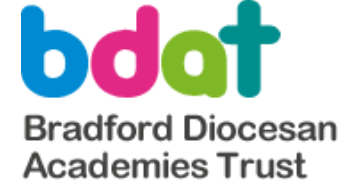The government has been accused of propping up under-subscribed free schools with “interest-free loans”, while academies and council schools are left to struggle on without extra cash.
It comes after new figures seen by Schools Week reveal the government overpaid free schools by more than £28 million in the past three years.
New free schools are initially funded on estimated numbers for the upcoming year. The Education Funding Agency (EFA) then reviews how many pupils are on roll at the end of the year and retrospectively retrieves or hands out extra funding.
Much of the £28 million extra funding was clawed back by the government, which recoups the cash from the first three months of the following year’s funding.
However, documents seen by Schools Week show that some free schools have secured deals to put off paying back the funding for up to two years.
Andy Jolley, a former school governor and education blogger who obtained the figures under the Freedom of Information Act, said: “It’s almost as if the government pumped money in to subsidise them – it’s like an interest-free loan.”
It’s almost as if the government pumped money in to subsidise them – it’s like an interest-free loan
The EFA granted Falcons Primary, in Leicester, a 15-month repayment schedule to recoup £300,000 extra funding (£20,000 per month).
And Parkfield School, in Bournemouth, has asked for a grant to cover 75 per cent of £493,000 additional funding the government is due to clawback.
In a governors’ meeting last year, school leaders blamed low pupil numbers on delays moving to a permanent site – a decision taken by the government.
It’s unclear if a deal was agreed as the school refused to comment.
Other free schools have run up large clawback bills over consecutive years, despite the government being made aware early on they were struggling to meet pupil estimates.
For instance, the government had to clawback £171,719 from Bolton Wanderers Free School in 2014-15.
Despite the school clearly struggling to recruit pupils, the government overfunded it again the following year – this time to the tune of more than £550,000.
The school will now close later this year, with nearly £500,000 still owed to the government.
Jolley said it was “ridiculous” that free schools “nowhere near their pupil targets” had been given “even more money for an even bigger target the next year”.
Other schools are relying on government deals to stave off closure. Latest accounts for Aston University Engineering Academy in Birmingham show it has agreed to put off a clawback from 2015 of £590,170 until this September, when pupil numbers are expected to have risen.
However accounts say the “material uncertainty” of future funding may “cast significant doubt on the trust’s ability to continue as a going concern”.
The school did not respond to a request for comment.
In December Schools Week revealed that the government had drawn up clawback plans totalling £11 million after 106 free schools failed to recruit estimated numbers in 2015-16.
The new figures show the government had to clawback nearly £18 million from more than 180 schools between 2013 and 2015.
Most of that has now found its way to the government – with just £4.1 million still outstanding.
Any money that is wasted from the system at the moment [during a funding squeeze] is a tragedy
Mark Lehain, founder and principal of Bedford Free School, said most free schools had managed the uncertainty in pupil numbers “really well”.
He said the funding system based on anticipated numbers was clearly set out, but urged schools to be cautious in their estimates.
Parliamentary figures from January show the government wrote off £800,000 that it felt it was unable to claw back, likely to be related to free schools closing without being able to repay debts.
But Lehain said taxpayers could be sure that where schools were overpaid, the government normally clawed back the money, something that didn’t generally happen when local authorities opened schools.
However, Liam Collins, head of Uplands Community College in East Sussex, said there were no similar funding deals for non-free schools.
His school had had to make budget cuts to cope with low pupil rolls for the previous five years.
Responding to the clawback system, he said: “Is it fair? No. Any money that is wasted from the system at the moment [during a funding squeeze] is a tragedy.”
A spokesperson for the Department for Education said it worked “closely with schools each year to review estimates and to help to minimise the likelihood of significant adjustments”.








I think that most parents that I speak with want a choice of one of two good LOCAL secondary schools to send their children to that remain autonomous but can partner and share resources such as sports facilities or building hire. Fragmentation is a word that I hear lots of – fragmentation of our planning system, our state school system, higher education, Brexit. LOCAL means sustainable transport, local means convenient for working parents, and local means building a stronger community of learners who can take part in extra-curricular activities to support the school. Free schools are driven by a selfish agenda – they are not built where most needed, they are driven by the self-interested, and they are black holes for large amounts of our taxpayer money. I call them “black-hole” schools. Schools tempted by the “extra” funding through the academies programme I fear will now be disappointed with the Westminster “pot” and the majority of parents, who do actually care about beloved class subject teachers and their childrens’education and mental health, now have very little say in this education market.